Top 10 Cat Breeds for Apartment Living
Are you a cat lover living in a cozy apartment? Choosing the right feline companion can make all the difference in your apartment living experience. With so many cat breeds to choose from, it can be overwhelming to decide which ones are best suited for your lifestyle.
- Why Cats Make Excellent Apartment Pets
- Space Efficiency Compared to Dogs
- Independent Nature and Self-Sufficiency
- Adaptability to Indoor Environments
- Key Factors to Consider When Choosing an Apartment Cat
- Size and Space Requirements
- Energy Levels and Exercise Needs
- Vocalization Tendencies
- Adaptability to Limited Space
- Temperament and Sociability
- Top 10 Cat Breeds for Apartment Living
- 1. British Shorthair: The Calm Companion
- Temperament and Personality Traits
- Space Requirements and Adaptability
- Noise Level and Neighbor-Friendliness
- Grooming Needs in Small Spaces
- 2. Ragdoll: The Relaxed Roommate
- Temperament and Personality Traits
- Space Requirements and Adaptability
- Noise Level and Neighbor-Friendliness
- Grooming Needs in Small Spaces
- 3. Russian Blue: The Quiet Intellectual
- Temperament and Personality Traits
- Space Requirements and Adaptability
- Noise Level and Neighbor-Friendliness
- Grooming Needs in Small Spaces
- 4. Scottish Fold: The Easygoing Companion
- Temperament and Personality Traits
- Space Requirements and Adaptability
- Noise Level and Neighbor-Friendliness
- Grooming Needs in Small Spaces
- 5. Maine Coon: The Gentle Giant
- Temperament and Personality Traits
- Space Requirements and Adaptability
- Noise Level and Neighbor-Friendliness
- Grooming Needs in Small Spaces
- 6. Siamese: The Social Butterfly
- Temperament and Personality Traits
- Space Requirements and Adaptability
- Noise Level and Neighbor-Friendliness
- Grooming Needs in Small Spaces
- 7. Persian: The Luxury Lounger
- Temperament and Personality Traits
- Space Requirements and Adaptability
- Noise Level and Neighbor-Friendliness
- Grooming Needs in Small Spaces
- 8. American Shorthair: The Adaptable Classic
- Temperament and Personality Traits
- Space Requirements and Adaptability
- Noise Level and Neighbor-Friendliness
- Grooming Needs in Small Spaces
- 9. Exotic Shorthair: The Low-Maintenance Persian
- Temperament and Personality Traits
- Space Requirements and Adaptability
- Noise Level and Neighbor-Friendliness
- Grooming Needs in Small Spaces
- 10. Burmese: The Playful Companion
- Temperament and Personality Traits
- Space Requirements and Adaptability
- Noise Level and Neighbor-Friendliness
- Grooming Needs in Small Spaces
- Making Your Apartment Cat-Friendly
- Vertical Space Solutions
- Interactive Toys for Mental Stimulation
- Creating Cozy Hideaways
- Litter Box Placement in Limited Space
- Pet-Proofing Small Living Areas
- Conclusion
- FAQ
- What are the best cat breeds for apartment living?
- Are there any cat breeds that are more adaptable to small spaces?
- Do I need to consider the energy level of a cat breed before adopting?
- How can I make my apartment more cat-friendly?
- Are there any cat breeds that are suitable for first-time cat owners living in apartments?
- What are some low-maintenance cat breeds for apartment living?
- Can I keep a larger cat breed in a small apartment?
- How can I minimize shedding in my apartment cat?
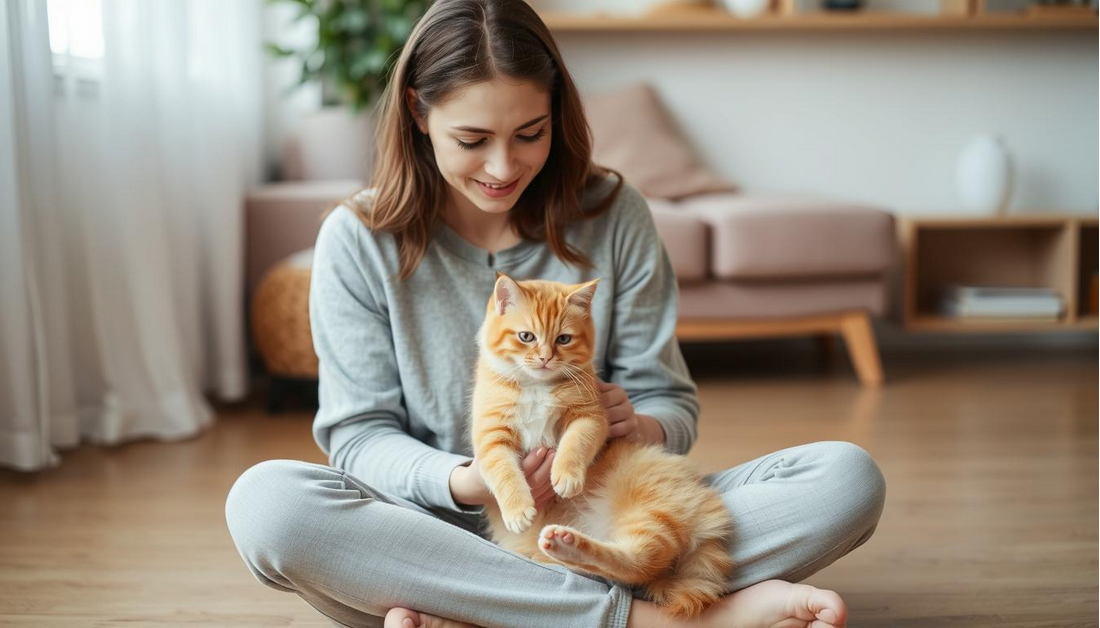
Some cat breeds are more adaptable to apartment living than others. Factors such as energy level, noise level, and grooming needs should be considered when selecting a breed. In this article, we’ll explore the best apartment-friendly cat breeds that will thrive in your home.
Key Takeaways
- Discover the most suitable cat breeds for apartment living
- Learn about the characteristics of apartment-friendly cats
- Understand the importance of choosing the right breed for your lifestyle
- Explore the benefits of having a low-maintenance cat breed
- Get insights into creating a happy and healthy environment for your cat
Why Cats Make Excellent Apartment Pets
Apartment living can be challenging for pet owners, but cats are generally a great fit due to their adaptability. Several factors contribute to their suitability for apartment living.
Space Efficiency Compared to Dogs
Cats are significantly more space-efficient than dogs, requiring less room to roam and exercise. This makes them ideal for smaller living spaces.
- They require minimal space for their litter box and bedding.
- Cats are generally sedentary, reducing the need for large areas to roam.
Independent Nature and Self-Sufficiency
Cats are known for their independent nature, which means they don’t require constant attention or interaction. This self-sufficiency is a significant advantage for busy apartment dwellers.
Adaptability to Indoor Environments
Cats are highly adaptable to indoor environments, making them perfect for apartment living. They can thrive in indoor settings with proper care and attention.

Some of the key benefits of having cats in apartments include their low maintenance, quiet nature, and ability to entertain themselves. These traits make them an excellent choice for those living in apartments.
Key Factors to Consider When Choosing an Apartment Cat
Choosing the right cat breed for apartment living involves evaluating several key characteristics that ensure compatibility with your lifestyle. This includes understanding the cat’s size, energy level, vocalization tendencies, adaptability, and temperament.
Size and Space Requirements
The size of the cat is a crucial factor for apartment living. While larger cats can adapt to smaller spaces, they still require enough room to move around comfortably. Compact breeds are often ideal for very small apartments.
Energy Levels and Exercise Needs
Cats have varying energy levels, and some require more exercise than others. High-energy breeds need more stimulation and activity to prevent boredom and destructive behavior.

Vocalization Tendencies
Some cat breeds are more vocal than others. If you live in an apartment with thin walls, a breed that meows less frequently might be preferable.
Adaptability to Limited Space
Cats that are adaptable to limited space are essential for apartment living. Breeds that are too territorial or require a lot of space may not thrive in small environments.
Temperament and Sociability
A cat’s temperament is vital for a harmonious living environment. Affectionate and easygoing breeds tend to make better companions in apartment settings.
| Factor | Ideal Characteristics for Apartment Living |
|---|---|
| Size | Compact or medium size |
| Energy Level | Low to moderate |
| Vocalization | Less frequent meowing |
| Adaptability | Highly adaptable |
| Temperament | Affectionate and easygoing |
Top 10 Cat Breeds for Apartment Living
tag and meets all the specified requirements.
1. British Shorthair: The Calm Companion
The calm and gentle British Shorthair is perfectly suited for apartment life. This breed is known for its easy-going temperament, making it an excellent choice for those living in smaller spaces.
Temperament and Personality Traits
The British Shorthair is characterized by its low-energy lifestyle and independent nature. They are not overly demanding and are happy to entertain themselves, which is ideal for apartment living where space is limited.
Low-Energy Lifestyle
Unlike some more energetic breeds, the British Shorthair is content with less strenuous activities, making them a great fit for apartments.
Independent Nature
Their independent nature means they don’t require constant attention, allowing owners to balance work and pet care more easily.
Space Requirements and Adaptability
British Shorthairs are adaptable to small living spaces due to their compact size and calm demeanor. They don’t need a lot of room to roam, making them perfect for apartment dwellers.
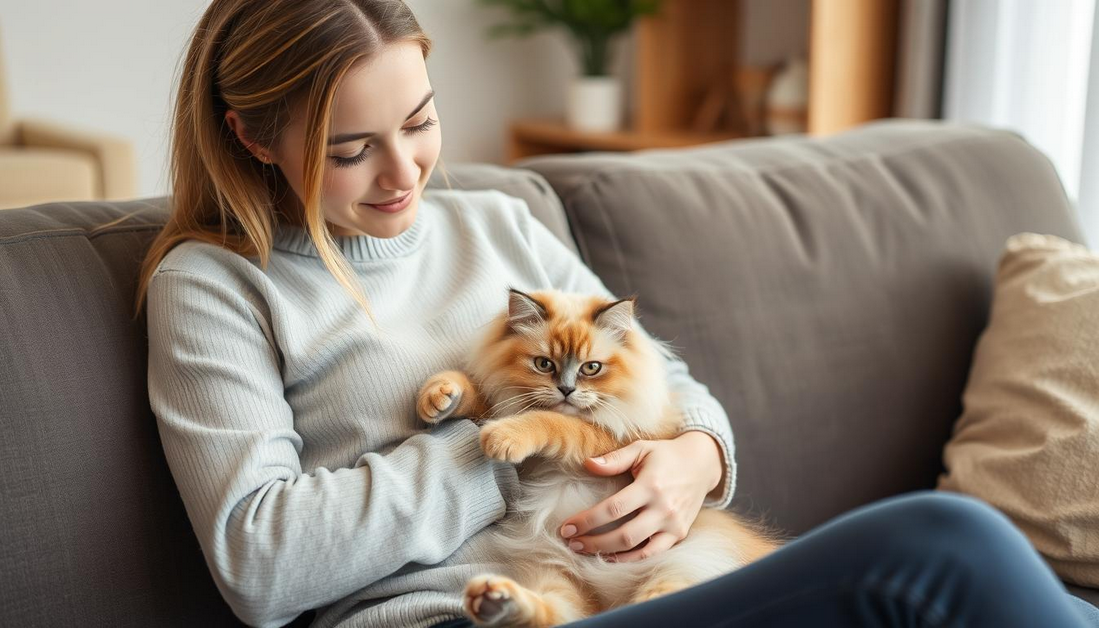
Noise Level and Neighbor-Friendliness
They are generally quiet, which is a significant advantage for apartment living where noise can be a concern for neighbors.
Grooming Needs in Small Spaces
The British Shorthair has a short, easy-to-maintain coat, which is beneficial for those living in small spaces with limited storage for grooming tools.
| Trait | Description | Benefit for Apartment Living |
|---|---|---|
| Temperament | Calm and gentle | Ideal for quiet living environments |
| Energy Level | Low | Less need for extensive exercise or space |
| Grooming Needs | Low maintenance | Easier to manage in small living spaces |
2. Ragdoll: The Relaxed Roommate
With their soft, silky coats and docile disposition, Ragdolls have become a favorite among cat enthusiasts living in apartments. This breed is known for its tendency to go limp when picked up, hence the name “Ragdoll.”
Temperament and Personality Traits
Ragdolls are characterized by their calm and affectionate nature. They are often described as having a dog-like personality because they tend to follow their owners around the house and enjoy being held.
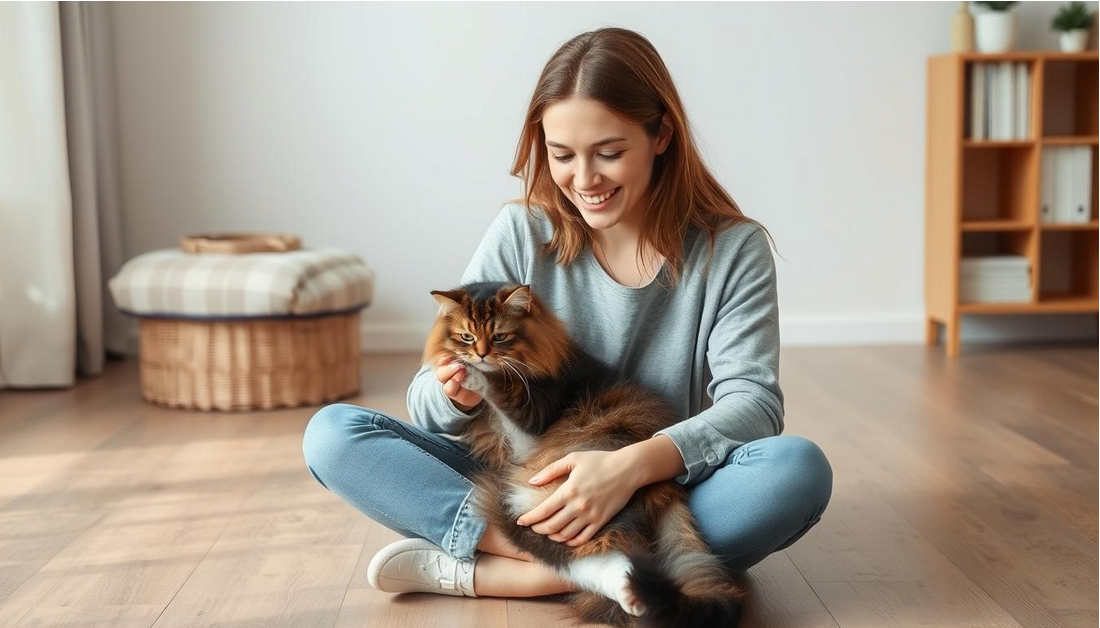
Docile Disposition
Their docile nature makes them an excellent choice for apartment living, as they are not typically aggressive or confrontational. Ragdolls are easygoing and adapt well to various living situations.
Affectionate Nature
Ragdolls are known for their affectionate personalities. They love human interaction and will often seek out attention from their owners. This affectionate nature makes them great companions for those living in apartments.
Space Requirements and Adaptability
Despite their size, Ragdolls do not require a lot of space to roam. They are happy with indoor living and can adapt to smaller spaces as long as they have enough room to stretch and move around.
- They are relatively large cats but are not overly demanding in terms of space.
- Ragdolls are happy to lounge around the apartment, making them suitable for smaller living spaces.
Noise Level and Neighbor-Friendliness
Ragdolls are generally quiet cats and are not known for being overly vocal. This makes them a good choice for apartment living where noise levels need to be kept to a minimum.
“Ragdolls are known for their soft, gentle voices. They are not as vocal as some other breeds, making them a great choice for apartment dwellers who want to minimize noise.”
Grooming Needs in Small Spaces
Ragdolls have a thick, silky coat that requires regular grooming. While they do shed, regular brushing can help minimize this issue.
- Brush your Ragdoll regularly to prevent matting and tangling.
- Regular grooming sessions can also help reduce shedding.
3. Russian Blue: The Quiet Intellectual
For those seeking a cat breed that embodies both intelligence and serenity, the Russian Blue is an ideal choice. Known for their plush, velvety coats and piercing green eyes, Russian Blues are not just visually stunning but also possess a unique personality that makes them perfect for apartment living.
Temperament and Personality Traits
The Russian Blue’s temperament is characterized by its reserved demeanor and high intelligence. They are not as demanding as some other breeds and can be quite content with simply being in the same room as their owners.
Reserved Demeanor
Russian Blues are known for being calm and laid-back. They are not typically demanding or overly clingy, making them a great fit for busy apartment dwellers. As one cat owner noted, “My Russian Blue is so laid-back, she often goes unnoticed until she wants attention.”
Intelligent Behavior
These cats are highly intelligent and can be quite playful when they want to be. They enjoy puzzle toys and interactive games that challenge their minds. “Their intelligence is one of their most appealing traits,” says a Russian Blue enthusiast.
Space Requirements and Adaptability
Despite their thick coats, Russian Blues are relatively low maintenance when it comes to space. They are adaptable to small living spaces as long as they have some vertical space to climb and play. A tall cat tree can be a great investment for a Russian Blue owner.
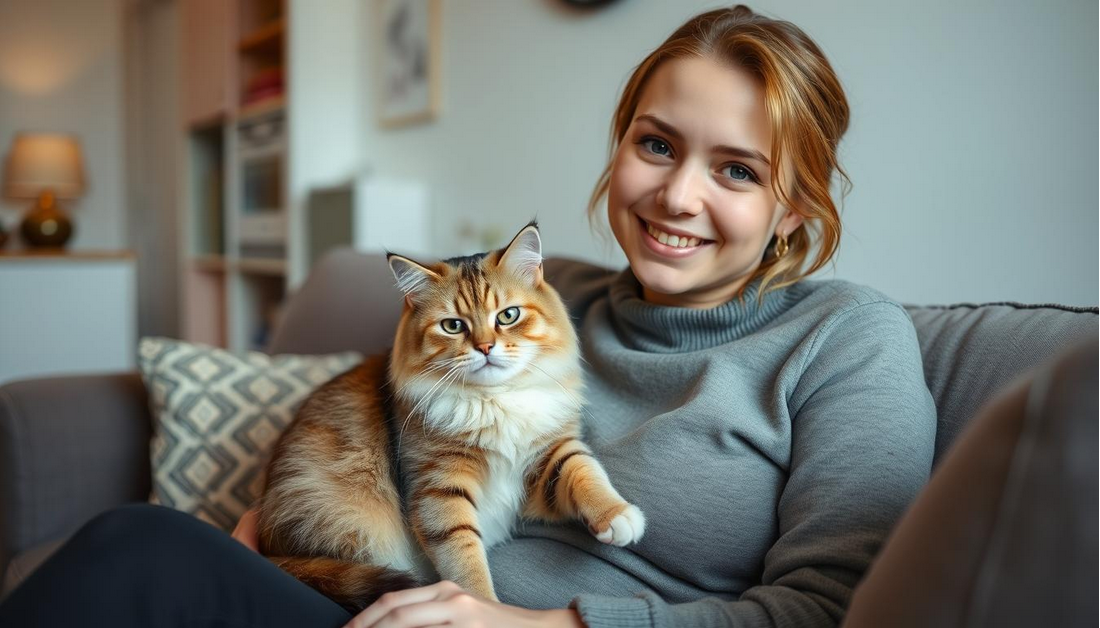
Noise Level and Neighbor-Friendliness
One of the Russian Blue’s most appealing traits is its quiet nature. They are not prone to loud meowing, making them an excellent choice for apartment living where noise can be a concern for neighbors.
Grooming Needs in Small Spaces
Russian Blues have a thick, double coat that sheds minimally, making them a great choice for those who want to keep their apartment clean. However, they still require regular grooming to prevent matting and tangling.
4. Scottish Fold: The Easygoing Companion
The Scottish Fold is a breed known for its easygoing nature, making it an ideal companion for apartment dwellers. This breed is characterized by its unique physical appearance and its adaptable personality.
Temperament and Personality Traits
The Scottish Fold is renowned for its calm and affectionate nature. It is a breed that thrives on human interaction but does not demand constant attention.
Adaptable Nature
The Scottish Fold is highly adaptable, making it suitable for a variety of living situations, including apartments. Its calm demeanor helps it adjust to the confines of smaller spaces.
Moderate Activity Level
This breed has a moderate energy level, requiring regular play but not excessive exercise. This makes it a great fit for apartment living where space for extensive physical activity may be limited.
Space Requirements and Adaptability
Despite its adaptability, the Scottish Fold still requires sufficient space to move around and engage in play. A well-designed apartment with vertical space can meet its needs.
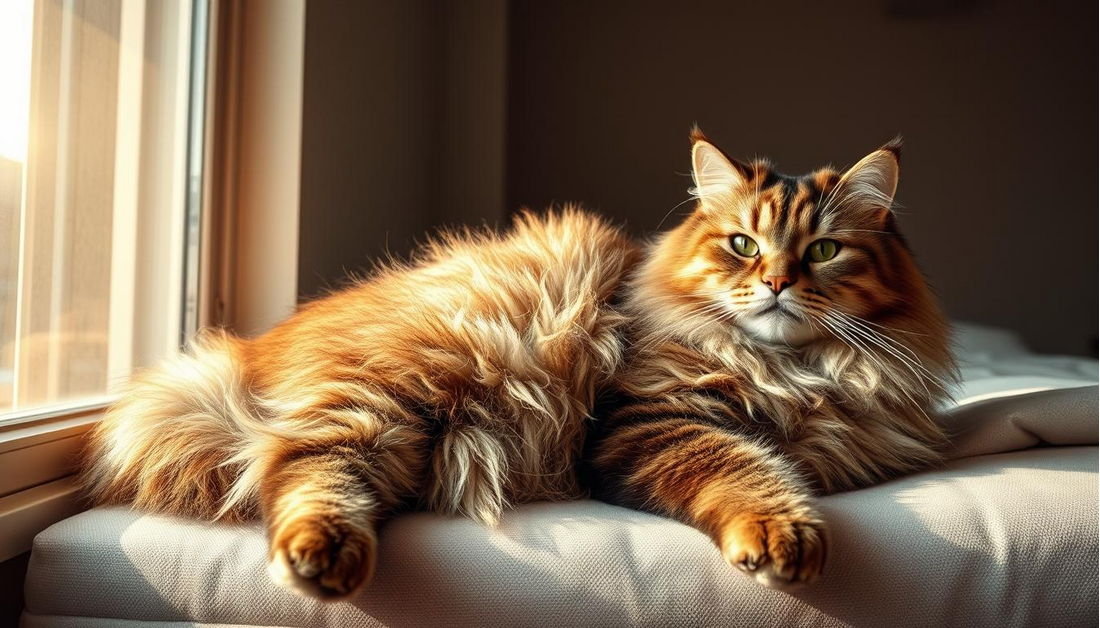
Noise Level and Neighbor-Friendliness
The Scottish Fold is generally quiet, with a soft voice that is not typically loud or demanding. This trait makes it a neighbor-friendly choice for apartment living.
Grooming Needs in Small Spaces
The Scottish Fold has a short to medium-length coat that requires regular grooming. In small spaces, regular grooming is not only necessary for its coat but also helps reduce hair circulation in the air.
| Trait | Description |
|---|---|
| Temperament | Calm, affectionate, and adaptable |
| Activity Level | Moderate |
| Noise Level | Quiet |
| Grooming Needs | Regular grooming required |
5. Maine Coon: The Gentle Giant
Maine Coon cats, with their friendly disposition and dog-like personality, are an intriguing option for those living in apartments. Despite their size, they can thrive in smaller living spaces with the right care and attention.
Temperament and Personality Traits
The Maine Coon is renowned for its friendly and outgoing personality. They are often described as having a dog-like personality due to their tendency to follow owners around the house and their love for interactive play. This unique blend of traits makes them a beloved companion.
Friendly Disposition
Their friendly disposition makes them an excellent choice for families and individuals alike. They are known to be very affectionate and enjoy human company, often seeking out interaction and cuddles.
Dog-Like Personality
Their dog-like traits include being highly interactive and responsive to their environment. This makes them entertaining companions and relatively easy to engage in play, which is essential for their mental and physical health.
Space Requirements and Adaptability
Despite their large size, Maine Coons can adapt to apartment living if provided with sufficient vertical space and regular exercise. They are not overly demanding in terms of space, but they do appreciate having room to stretch and move around.
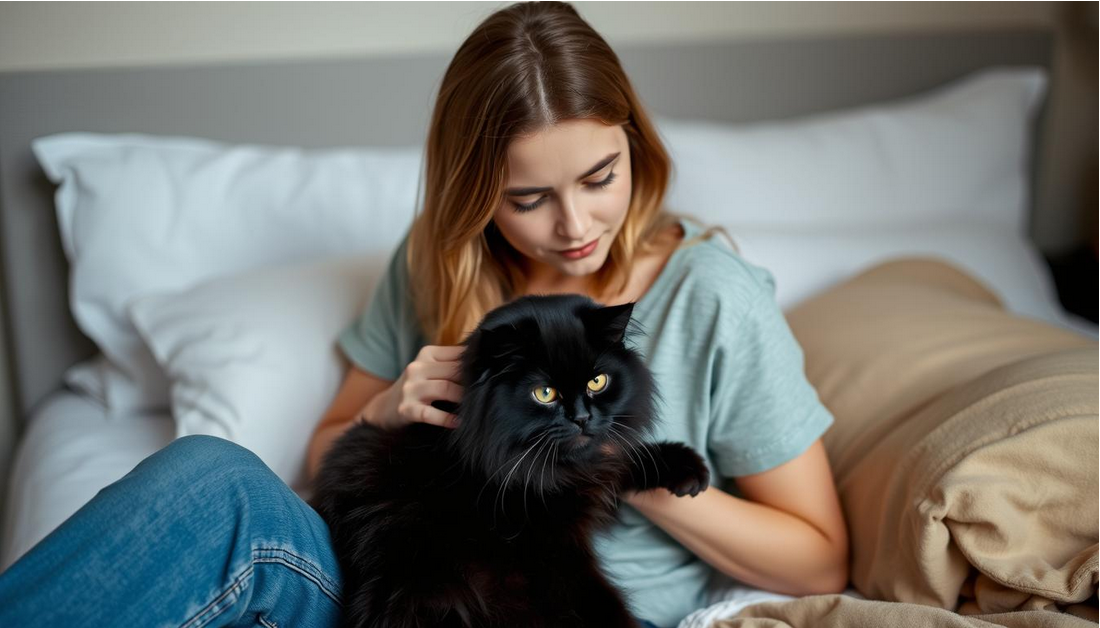
Noise Level and Neighbor-Friendliness
Maine Coons are generally not overly vocal, which makes them a good choice for apartment living where noise can be a concern for neighbors. They communicate in soft chirps and meows, rather than loud meowing.
Grooming Needs in Small Spaces
While Maine Coons have a thick coat, regular grooming can help manage shedding and prevent matting. This is a consideration for apartment dwellers who need to maintain a clean living environment. Regular brushing not only reduces shedding but also strengthens the bond between cat and owner.
6. Siamese: The Social Butterfly
Siamese cats are often described as social butterflies due to their affectionate nature. They are known for forming strong bonds with their owners and being highly interactive.
Temperament and Personality Traits
The Siamese breed is characterized by its outgoing and extroverted personality. They are highly intelligent and curious, often described as “talkative” due to their vocal nature.
Vocal Tendencies
Siamese cats are known for being vocal, using a range of sounds to communicate with their owners. As one cat owner noted,
“My Siamese cat ‘talks’ to me all the time, it’s like having a conversation with her.”
This vocal tendency can be both a charm and a challenge for apartment dwellers.
Human-Oriented Behavior
They thrive on human interaction and can become demanding of attention. Their social nature means they require engagement and can become destructive if left alone for too long without stimulation.
Space Requirements and Adaptability
Despite their energetic nature, Siamese cats can adapt to apartment living if provided with adequate stimulation and exercise. They don’t require a lot of space to roam but benefit from vertical space to climb and play.
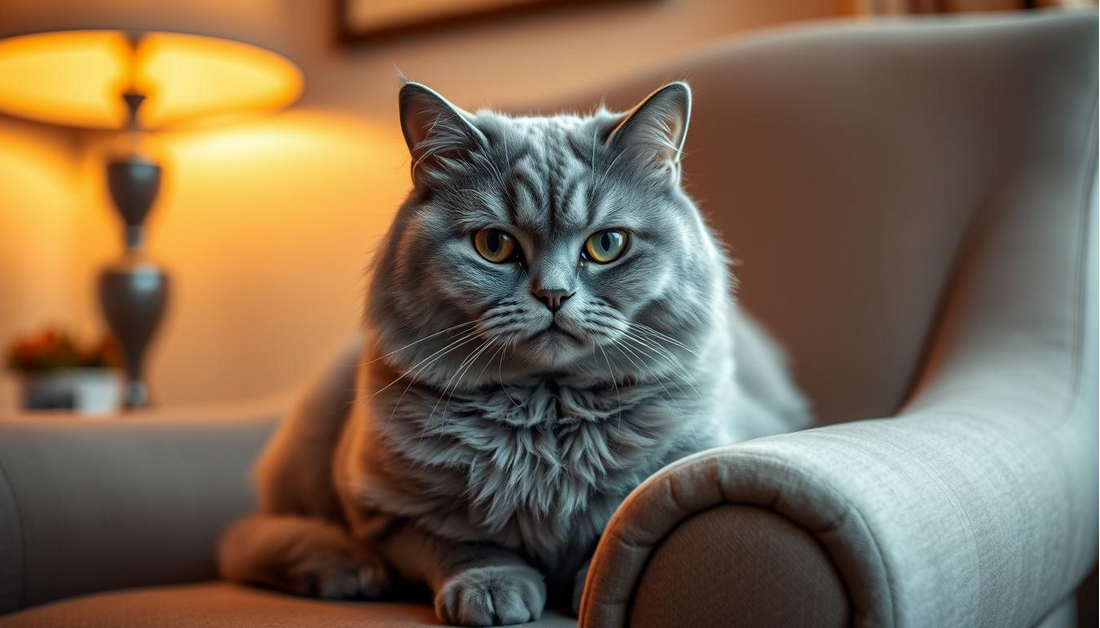
Noise Level and Neighbor-Friendliness
Their vocal nature can be a concern for neighbors. However, with proper training and attention, Siamese cats can learn to be less demanding and vocal.
Grooming Needs in Small Spaces
Siamese cats have a short, fine coat that requires minimal grooming, making them a low-maintenance choice for apartment living.
In conclusion, the Siamese breed can make a wonderful pet for apartment dwellers who are willing to provide the necessary attention and interaction. Their social and affectionate nature makes them a loving companion.
7. Persian: The Luxury Lounger
The Persian cat breed is renowned for its serene and laid-back nature, making it an ideal companion for apartment dwellers. Known for their luxurious coats and calm demeanor, Persians are a popular choice for those seeking a low-maintenance yet elegant pet.
Temperament and Personality Traits
Persian cats are characterized by their sedentary lifestyle and calm demeanor. They are not as demanding as some other breeds and are generally content with simply lounging around the house.
Sedentary Lifestyle
Persians are not high-energy cats and do not require a lot of exercise. They are happy with short play sessions and plenty of rest.
Calm Demeanor
Their calm nature makes them an excellent choice for apartment living, as they are less likely to be noisy or cause disturbances.
Space Requirements and Adaptability
Despite their size, Persian cats are adaptable to small living spaces. They require minimal space to roam and are comfortable in apartments with limited square footage.
Noise Level and Neighbor-Friendliness
Persians are known for being quiet and are generally not vocal. This makes them a great choice for apartment dwellers who live in close proximity to neighbors.
Grooming Needs in Small Spaces
One of the key considerations for Persian cat owners is their grooming needs. Their long coats require regular brushing to prevent matting and tangling.
| Characteristics | Description |
|---|---|
| Temperament | Calm and Sedentary |
| Space Requirements | Minimal |
| Noise Level | Low |
| Grooming Needs | High |
8. American Shorthair: The Adaptable Classic
The American Shorthair is a versatile cat breed known for its adaptability. This breed is particularly suited for apartment living due to its calm and easygoing nature.
Temperament and Personality Traits
The American Shorthair boasts a unique combination of traits that make it an excellent apartment cat. Its temperament is characterized by:
- Easygoing Nature: They are not demanding and are happy to adapt to their owner’s lifestyle.
- Moderate Energy Level: They have enough energy to play but are not overly demanding in terms of exercise.
Easygoing Nature
Their easygoing nature means they are less likely to be stressed by the confines of apartment living. This makes them a great choice for those who live in smaller spaces.
Moderate Energy Level
With a moderate energy level, American Shorthairs enjoy playing but also value their rest. This balance makes them suitable for apartment living where space for extensive exercise may be limited.
Space Requirements and Adaptability
American Shorthairs are adaptable to various living situations, including apartments. They require minimal space to roam and can thrive in smaller environments as long as they have some vertical space to climb.
Noise Level and Neighbor-Friendliness
They are generally quiet cats, which is a plus for apartment dwellers. Their meows are not excessively loud, making them a neighbor-friendly choice.
Grooming Needs in Small Spaces
Their short coat requires minimal grooming, making them a low-maintenance choice for apartment residents. A weekly brushing is sufficient to keep their coat in good condition.
9. Exotic Shorthair: The Low-Maintenance Persian
With its calm demeanor and plush coat, the Exotic Shorthair makes a wonderful companion for apartment dwellers. This breed combines the best traits of the Persian with a more manageable coat, making it an ideal choice for those who want a low-maintenance yet affectionate pet.
Temperament and Personality Traits
The Exotic Shorthair is known for its quiet and gentle nature. They are not as demanding as some other breeds and are generally happy to simply be around their owners.
Quiet Disposition
One of the standout features of the Exotic Shorthair is its quiet disposition. They are not prone to loud meowing, making them a great choice for apartment living where noise levels need to be kept down.
Affectionate Behavior
Despite their calm nature, Exotic Shorthairs are very affectionate and enjoy spending time with their owners. They make great lap cats and are often described as having a “teddy bear” like personality due to their cuddly nature.
Space Requirements and Adaptability
Exotic Shorthairs are adaptable to living in small spaces, making them perfect for apartment dwellers. They don’t require a lot of room to roam and are happy in smaller environments as long as they have their basic needs met.
Noise Level and Neighbor-Friendliness
As mentioned earlier, Exotic Shorthairs are quiet, which makes them very neighbor-friendly. They are not likely to disturb others in the building with loud meowing or other noise.
Grooming Needs in Small Spaces
One of the advantages of the Exotic Shorthair over the Persian is its lower grooming needs. While they still require regular grooming to prevent matting, their short coat makes them a more manageable choice for those who don’t want to deal with the high maintenance grooming of a Persian.
| Characteristic | Exotic Shorthair | Persian |
|---|---|---|
| Coat Length | Short | Long |
| Grooming Needs | Low-Medium | High |
| Noise Level | Quiet | Quiet |
| Affection Level | High | High |
10. Burmese: The Playful Companion
The Burmese cat breed is known for its playful and affectionate nature, making it an ideal companion for apartment dwellers. This breed thrives on human interaction and is highly adaptable to indoor living environments.
Temperament and Personality Traits
The Burmese cat is characterized by its interactive nature and people-oriented personality. They are known to be highly social and enjoy engaging with their human family members.
Interactive Nature
Burmese cats are playful and love to engage in activities with their owners. They are often described as “dog-like” in their behavior because they tend to follow their owners around the house and enjoy playing fetch.
People-Oriented Personality
These cats are extremely affectionate and demand attention from their owners. They are known to form strong bonds with their family and are often described as “velcro cats” because they love to be close to their people.
Space Requirements and Adaptability
Despite their energetic nature, Burmese cats are well-suited for apartment living due to their relatively small size. They require minimal space to roam and can adapt to living in small apartments as long as they receive adequate exercise and attention.
Noise Level and Neighbor-Friendliness
Burmese cats are generally not overly vocal, but they will communicate their needs to their owners. They are considered to be neighbor-friendly as they do not meow excessively.
Grooming Needs in Small Spaces
The Burmese breed has a short, fine coat that requires minimal grooming. This makes them an ideal choice for apartment dwellers who want a low-maintenance pet.
| Characteristics | Description |
|---|---|
| Temperament | Playful, affectionate, and people-oriented |
| Space Requirements | Minimal space needed; adaptable to small apartments |
| Noise Level | Generally not overly vocal; considered neighbor-friendly |
| Grooming Needs | Low maintenance; short, fine coat |
Making Your Apartment Cat-Friendly
Transforming your apartment into a cat-friendly haven is easier than you think. By understanding and catering to your cat’s unique needs, you can create a comfortable and engaging environment that promotes their well-being and happiness.
Vertical Space Solutions
Maximizing vertical space is crucial in small apartments. It not only provides your cat with more room to explore but also helps keep them active and entertained.
Cat Trees and Wall Shelves
Investing in cat trees and wall shelves is an excellent way to utilize vertical space. These structures allow your cat to climb, perch, and observe their surroundings from different heights. Multi-level cat trees are particularly beneficial as they offer multiple perches and hideaways.
Window Perches for Entertainment
Window perches are another great way to enhance your cat’s environment. They provide a comfortable spot for your cat to lounge in while enjoying the view and sunlight. This can be especially entertaining for cats, as they can watch birds and other outdoor activities.
Interactive Toys for Mental Stimulation
Interactive toys are essential for keeping your cat mentally stimulated. They challenge your cat and keep them engaged, reducing the likelihood of boredom and related behavioral issues. Examples include puzzle toys, laser pointers, and feather wands.
Creating Cozy Hideaways
Cats often appreciate having cozy, secluded spots where they can retreat and feel safe. You can create these hideaways using cardboard boxes, cat tents, or even converting a closet into a cat cave.
Litter Box Placement in Limited Space
Proper litter box placement is vital in small apartments. It’s essential to place the litter box in a quiet, accessible location to encourage your cat to use it consistently. Consider using a litter box with a low profile or a hidden litter box enclosure to save space.
Pet-Proofing Small Living Areas
Pet-proofing your apartment is crucial to prevent damage and ensure your cat’s safety. Secure loose wires, remove toxic substances, and stabilize heavy furniture to create a safe environment for your cat to explore.
Conclusion
Choosing the right cat breed for apartment living can be a daunting task, but with the right guidance, you can find your ideal feline companion. Our exploration of the top cat breeds for apartments has highlighted the importance of considering factors such as temperament, energy levels, and grooming needs.
The top cat breeds for apartments, including the British Shorthair, Ragdoll, and Russian Blue, offer a great balance of traits ideal for apartment settings. By understanding the characteristics of these breeds and making your apartment cat-friendly, you can create a harmonious living environment for both you and your cat.
Whether you’re looking for a low-maintenance companion or an affectionate friend, our apartment cat guide has provided you with the necessary insights to make an informed decision. By selecting the best cat breeds for apartment living and creating a cat-friendly space, you’ll be well on your way to a happy and fulfilling cat ownership experience.
FAQ
What are the best cat breeds for apartment living?
The best cat breeds for apartment living are those that are quiet, laid-back, and not too demanding in terms of space or exercise. Some of the top breeds include the British Shorthair, Ragdoll, and Russian Blue.
Are there any cat breeds that are more adaptable to small spaces?
Yes, breeds like the Scottish Fold, Maine Coon, and Exotic Shorthair are known to be adaptable to small spaces and can thrive in apartment living.
Do I need to consider the energy level of a cat breed before adopting?
Yes, it’s essential to consider the energy level of a cat breed to ensure it matches your lifestyle. If you’re away from home for extended periods, a low-maintenance breed with a calm demeanor might be a better fit.
How can I make my apartment more cat-friendly?
You can make your apartment more cat-friendly by providing vertical space solutions like cat trees and wall shelves, interactive toys for mental stimulation, and cozy hideaways. Additionally, consider pet-proofing your living area and placing litter boxes strategically.
Are there any cat breeds that are suitable for first-time cat owners living in apartments?
Yes, breeds like the American Shorthair and Burmese are great for first-time cat owners. They are relatively easy to care for and can adapt well to apartment living.
What are some low-maintenance cat breeds for apartment living?
The British Shorthair, Persian, and Exotic Shorthair are considered low-maintenance breeds. They are relatively quiet, laid-back, and don’t require a lot of exercise or grooming.
Can I keep a larger cat breed in a small apartment?
While it’s possible to keep a larger breed like the Maine Coon in a small apartment, it’s crucial to ensure they have enough space to move around and exercise. Providing vertical space and interactive toys can help.
How can I minimize shedding in my apartment cat?
Regular grooming can help minimize shedding. Some breeds, like the Russian Blue and Balinese, are known to shed less than others. Using a HEPA air purifier can also help reduce cat hair and dander.








